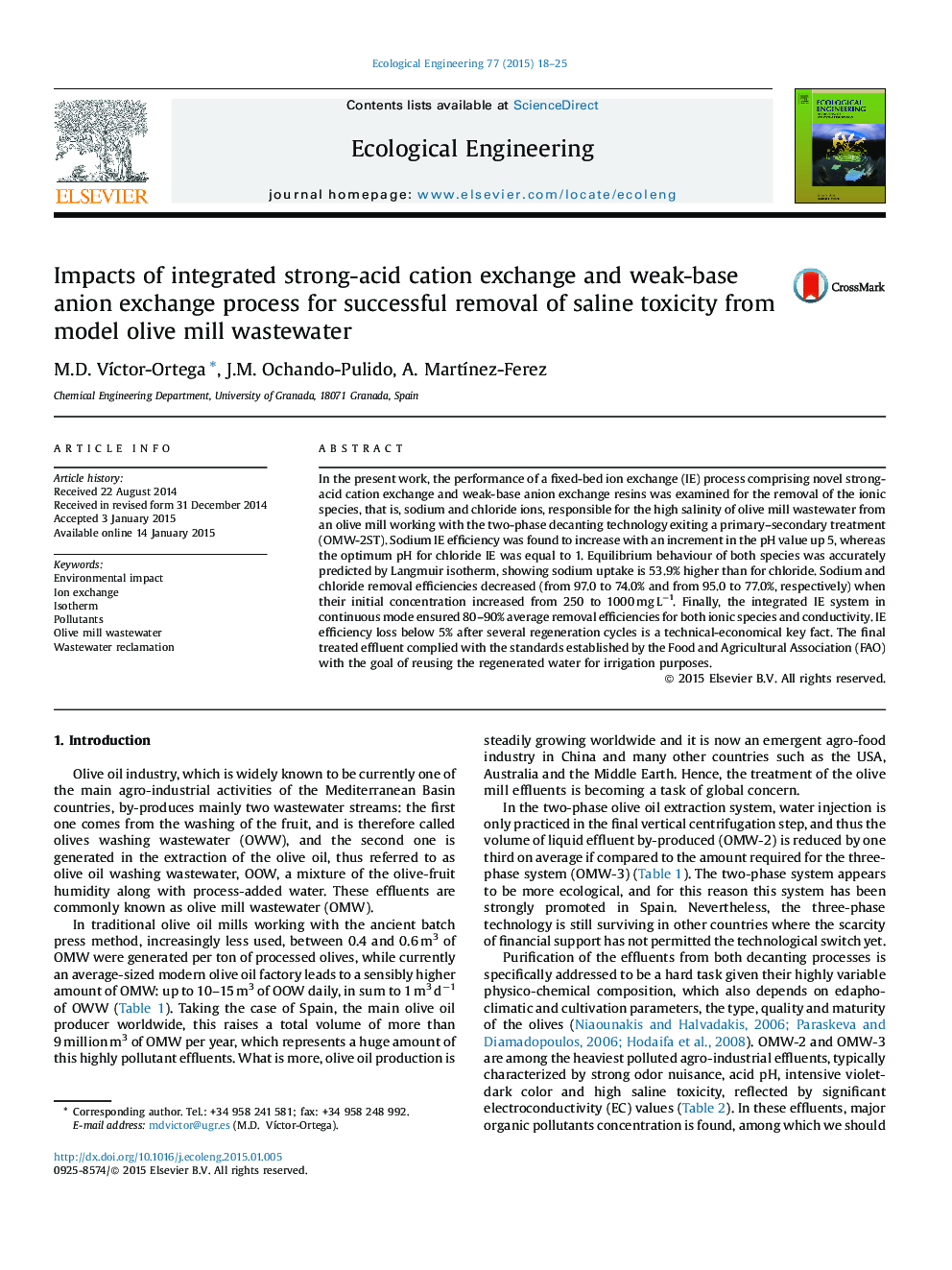| کد مقاله | کد نشریه | سال انتشار | مقاله انگلیسی | نسخه تمام متن |
|---|---|---|---|---|
| 4389243 | 1618022 | 2015 | 8 صفحه PDF | دانلود رایگان |
• OMW-2 resulting from primary–secondary treatment presents high salinity values.
• Langmuir isotherm predicts 53.9% higher sodium removal than chloride.
• 80–90% average efficiencies achieved by the proposed IE process in continuous mode.
• Final treated effluent fulfilled with FAO guides for reusing with irrigation purpose.
In the present work, the performance of a fixed-bed ion exchange (IE) process comprising novel strong-acid cation exchange and weak-base anion exchange resins was examined for the removal of the ionic species, that is, sodium and chloride ions, responsible for the high salinity of olive mill wastewater from an olive mill working with the two-phase decanting technology exiting a primary–secondary treatment (OMW-2ST). Sodium IE efficiency was found to increase with an increment in the pH value up 5, whereas the optimum pH for chloride IE was equal to 1. Equilibrium behaviour of both species was accurately predicted by Langmuir isotherm, showing sodium uptake is 53.9% higher than for chloride. Sodium and chloride removal efficiencies decreased (from 97.0 to 74.0% and from 95.0 to 77.0%, respectively) when their initial concentration increased from 250 to 1000 mg L−1. Finally, the integrated IE system in continuous mode ensured 80–90% average removal efficiencies for both ionic species and conductivity. IE efficiency loss below 5% after several regeneration cycles is a technical-economical key fact. The final treated effluent complied with the standards established by the Food and Agricultural Association (FAO) with the goal of reusing the regenerated water for irrigation purposes.
Journal: Ecological Engineering - Volume 77, April 2015, Pages 18–25
